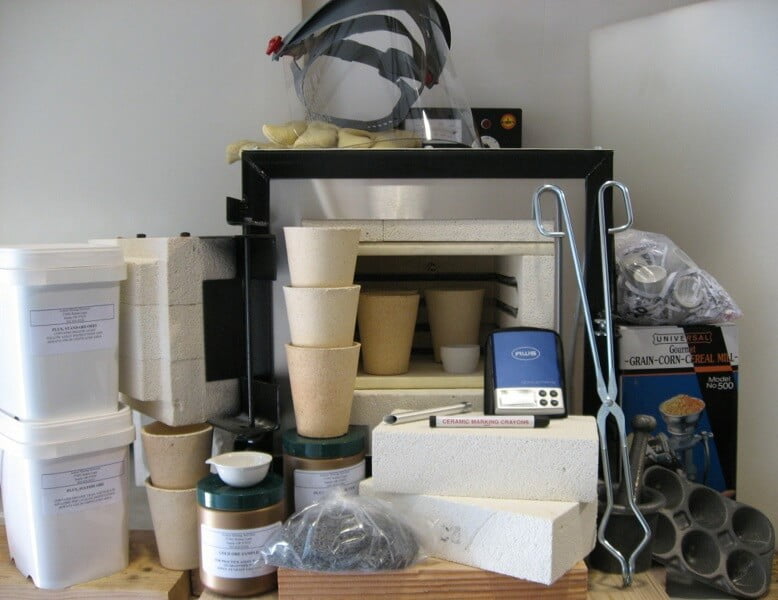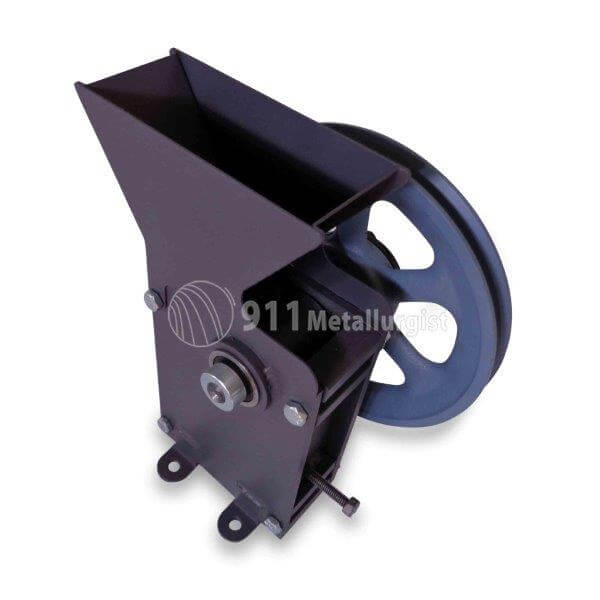911MPE offers all the major components of this complete process plant designed using these key design parameters:
- Coarse/Fine ore bin
- Vibrating Grizzly feeder
- Jaw crusher
- Dry/wet reagent feeders
- Conveyor belts
- Primary Ball Mill
- Regrind Mills (Optional)
- Spiral classifier
- Conditioner tank
- Flotation cells
- Sump pumps
- Flotation Reagents used:
Lime, NaCN, ZnSO4, PAX, MIBC
|
- ROM = 100 mm
- Jaw crusher F80 = 75 mm
- Jaw crusher P80 = 12 mm
- Steel balls = 2.5″
- Steel balls charge = 1700 tonne
- Ball Mill F80 = 12 mm
- Ball Mill P80 = 100 µm
- Spiral classifier overflow = 33%
- Rougher pulp density = 33%
- 1st Cleaner pulp density = 18%
- 2nd/3rd Cleaner density = 15%
- Rougher Retention = 23 minutes
|
RECOVER GOLD BY GRAVITY METHOD & FLOTATION
The flotation process is now used very extensively on gold ores, not only for concentrating the values without other processes, but also in conjunction with amalgamation, gravity concentration, or cyanidation leaching, to improve recoveries and to give lower treatment costs. In many instances, it is most profitable to recover the gold in the form of a concentrate, and either ship this product to a smelter, or amalgamate or cyanide the concentrates at the mine. In other cases, flotation has been utilized to recover the values remaining after amalgamation or gravity concentration. Today flotation is also being used to remove copper or other cyanicides prior to the cyanide treatment, and in many cases to recover a concentrate containing the values in the sulphides that remain in the tailings from the cyanide plant. These values that are contained in the sulphides can sometimes be recovered by further grinding and cyanidation or amalgamation treatment, or, if refractory, by roasting and cyanidation or by direct shipment to the smelter.
The present day success of many small gold mines is directly traceable to the use of flotation, as a flotation plant can be constructed for less than half the cost of a cyanide plant. The use of flotation has made it possible for many mines to operate where the ore bodies are complex and would not have justified the capital expenditure required for other methods of treatment.
Flotation Plants, illustrated in the following pages, show the compactness and simplicity of the modern milling plant. These have been designed to meet present day needs of standardized and economical milling plants with a flexible flowsheet that can be altered slightly so that a wide variety of ores can be efficiently treated. They are built to handle any tonnage desired, but 25-35 tons, 50-65 tons, and 100-125 tons per day are most common. Standard equipment is used throughout, and only machines that have proved successful in installations the world over, have been included. While the entire milling plants have been shown, individual machines can be easily incorporated in existing plants.
The selection of the equipment for these mills will naturally depend upon the flowsheet. Metallurgical tests are necessary to determine this flowsheet. This step should be considered, as these ore tests will show the most economical treatment process, as well as indicating the recovery, grade of concentrates, and economic possibilities of the project.
ORE TREATMENT PROCESSES have been improving rapidly during the last few years, and this advancement is due primarily to the improvements made in the flotation process. The field for flotation has been broadened to include the concentration of most non-metallic minerals, and its efficiency has been increased on base metal ores.









